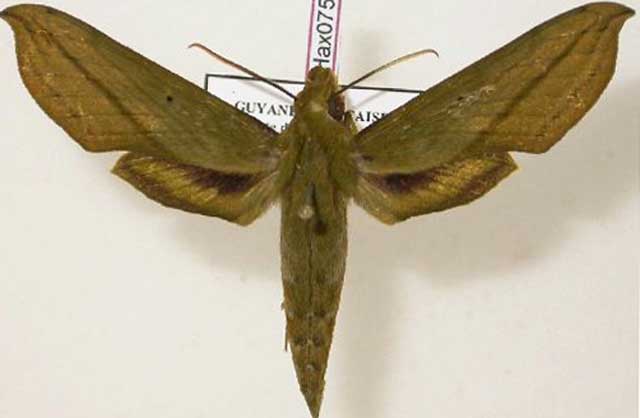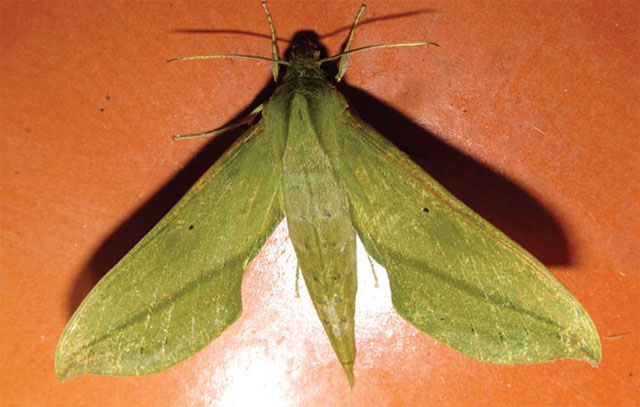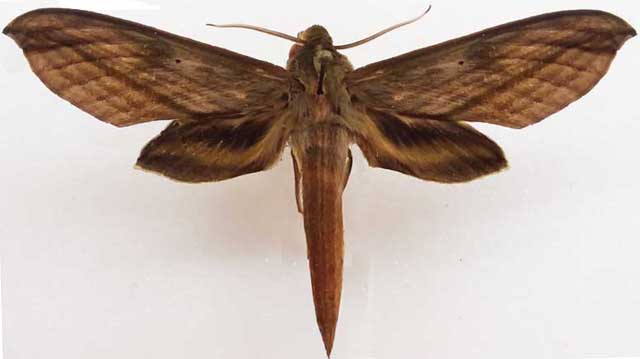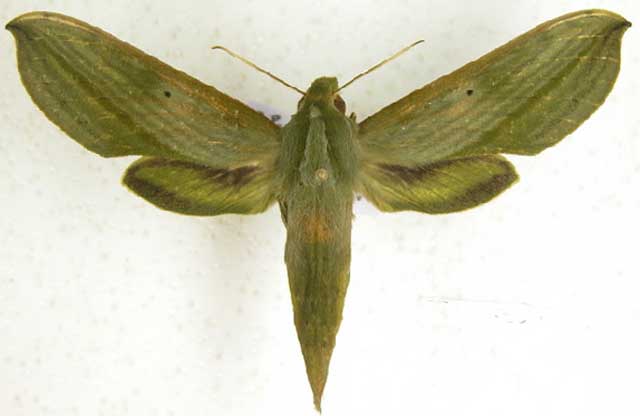Xylophanes elara
Xylophanes elara
(Druce, 1878)

Xylophanes elara, French Guiana, courtesy of Jean Haxaire
This site has been created by Bill Oehlke.
Comments, suggestions and/or additional information are welcomed by Bill.
TAXONOMY:
Family: Sphingidae, Latreille, 1802
Subfamily: Macroglossinae, Harris, 1839
Tribe: Macroglossini, Harris, 1839
Genus: Xylophanes Hubner [1819] ...........
Species: elara Druce, 1878
|
DISTRIBUTION:
Xylophanes elara (wngspan: approx. 70mm) flies in forests and cerrado biotypes in
Paraguay (specimen type): Guaira, Alto Parana, Caazapa
(possibly Caaguazu and Itapua (WO??));
Suriname ;
Guyana;
French Guiana;
Venezuela;
Bolivia:
Santa Cruz: Guarayos, Perseverancia;
Ichilo, Buena Vista, (750m); and
Brazil: (Amazonian forests and cerrado) Para, Mato Grosso, Goias, and Minas Gerais, possibly Bahia??
Ezequiel Bustos has recently sent me copy of a publication recording this species in
Argentina: Misiones.
The Misiones, Argentina image is of a much greener moth without the deep excavations just below the forewing tip, indicating an
incomplete/damaged and sun exposed/"browned" specimen at the top of the page. There is a small, black, distinct, forewing cell spot in this species.
The forewing outer margin, below the slightly excavated apex, is noticeably convex.

Xylophanes elara, El Dorado, Misiones, Argentina,
October 2, 2015, courtesy of Ezequiel N. Bustos.

Xylophanes ssp ??, 70mm, Instituto Uiracu, Camacan, Bahia, Brasil,
September, 2011, 800m, courtesy of Anna & Frank West.
Bingo! By process of elimination I am pretty sure the image above is Xylophanes elara which has browned with age. Many of the greenish sphinx moths
have the green turn brownish over time.

Xylophanes elara, French Guiana, courtesy of Jean Haxaire

Xylophanes elara, Carlos Mielke.
FLIGHT TIMES:
Xylophanes elara adults fly in March-April and August in Bolivia.
Ezequiel reports an October flight in Misiones, Argentina. I do not think the specimen depicted from Misiones is X. elara.
ECLOSION:
Pupae probably wiggle to surface from subterranean chambers just prior to eclosion.
SCENTING AND MATING:Females call in the males with a pheromone released from a gland at the tip of the
abdomen. Males come in to lights very readily, but females are seldom taken in that way.
EGGS, LARVAE, PUPAE:
Larvae probably feed on members of the Rubiaceae or Malvaceae families.
Moths emerge approximately one-two months after larvae pupate.
Use your browser "Back" button to return to the previous page.
Goto Main Sphingidae Index
Goto Macroglossini Tribe
Goto Central American Indices
Goto Carribean Islands
Goto South American Indices
Goto U.S.A. tables



